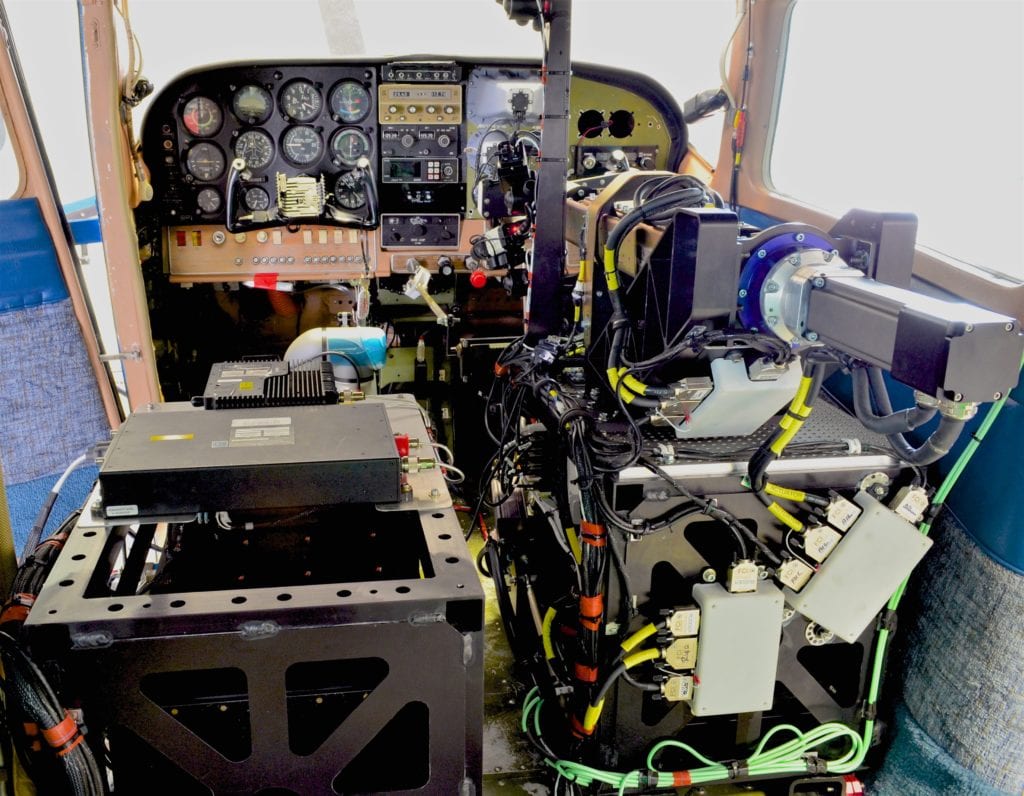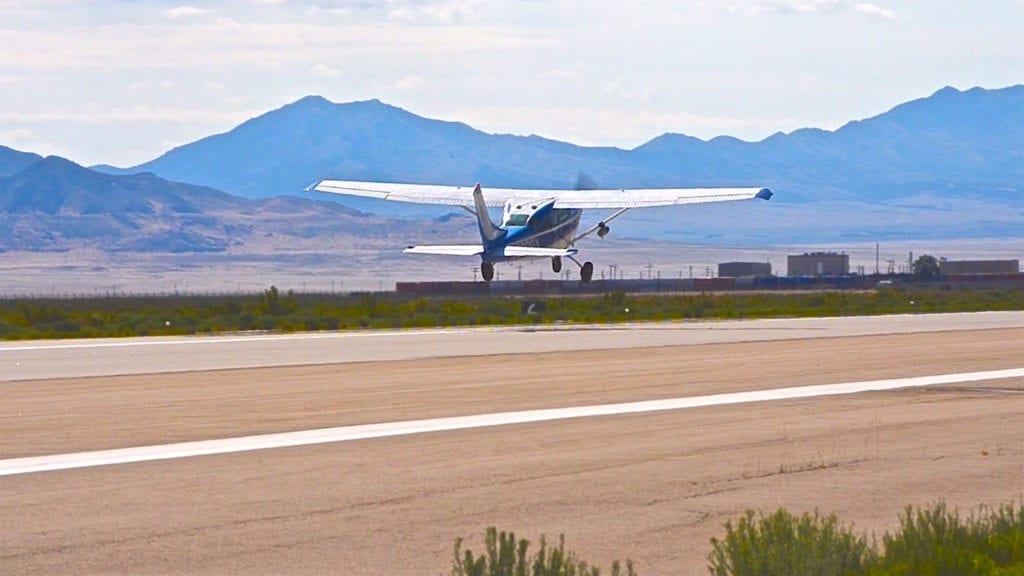
The Air Force Research Laboratory system, pictured here, completed an unmanned test flight. Photo: AFRL
The Air Force Research Laboratory (AFRL) has announced the successful flight demonstration of a new robotically manned air platform whose technology could pave the way for more optionally manned aircraft in the future.
The laboratory and DZYNE Technologies Inc. successfully completed a two-hour initial flight of the Robotic Pilot Unmanned Conversion Program (ROBOpilot) Aug. 9 at Dugway Proving Ground, Utah, per an Aug. 15 release.
“This flight test is a testament to AFRL’s ability to rapidly innovate technology from concept to application in a safe build-up approach while still maintaining low cost and short timelines,” said Maj. Gen. William Cooley, AFRL Commander, in the release.
Eventually, the technology could be used to rapidly and affordably convert a general aviation aircraft into an unmanned aerial vehicle and return it back to its original manned configuration after autonomously performing a mission, said Alok Das, senior scientist with AFRL’s Center for Rapid Innovation. “All of this is achieved without making permanent modifications to the aircraft,” he said.

The ROBOpilot controlled 1968 Cessna 206 taking off during it’s first flight at Dugway Proving Ground, Utah. Photo: AFRL
The program is meant to interact with an air system the same way as a human pilot, pushing on the rudders and brakes, flipping switches and reading dashboard gauges. It also uses sensors for situational awareness and information gathering, to be analyzed by a computer that decides how to control the flight.
It is installed by replacing the pilot’s seat with a frame containing commercially produced actuators, cameras and power systems, providing an affordable way to turn a manned aircraft temporarily unmanned for combat situations.
“ROBOpilot offers the benefits of unmanned operations without the complexity and upfront cost associated with the development of new unmanned vehicles,” Das said.
AFRL and DZYNE designed, built and tested ROBOpilot over the past year under a Direct to Phase II Small Business Innovation Research (SBIR) contract.